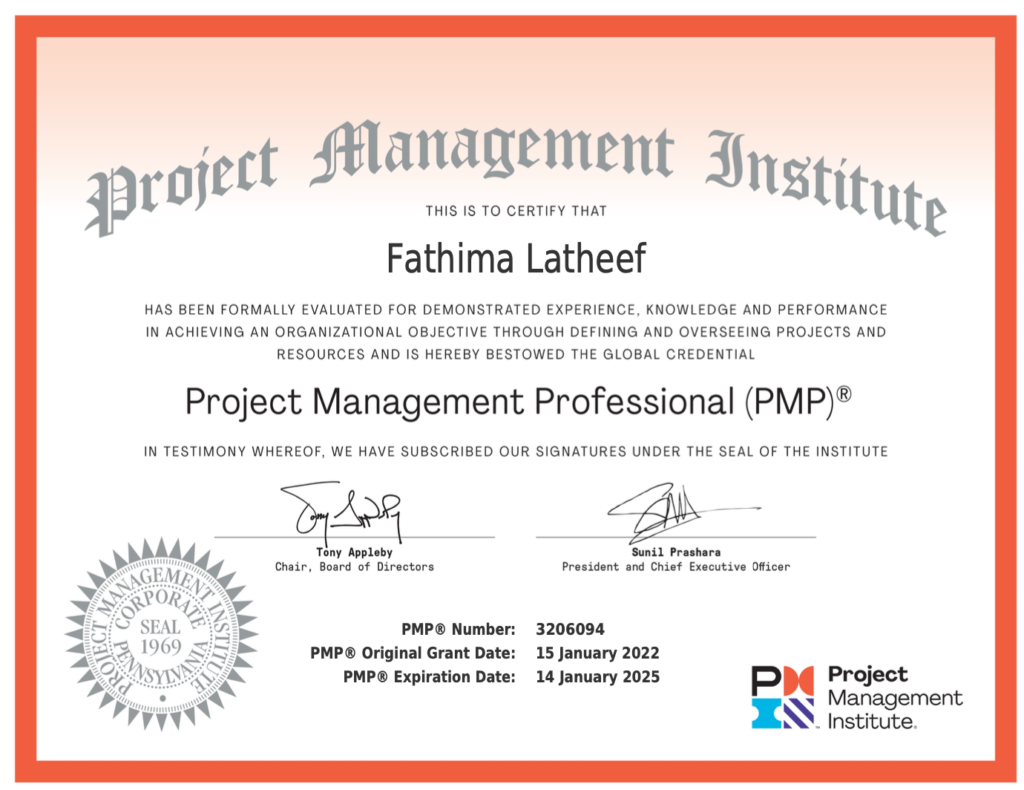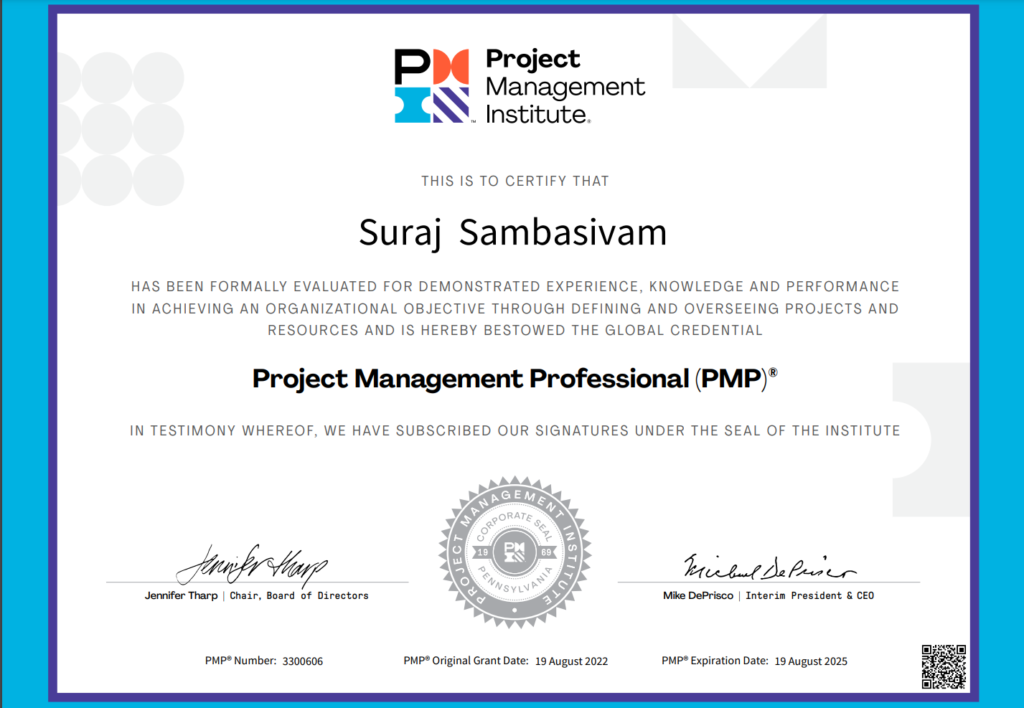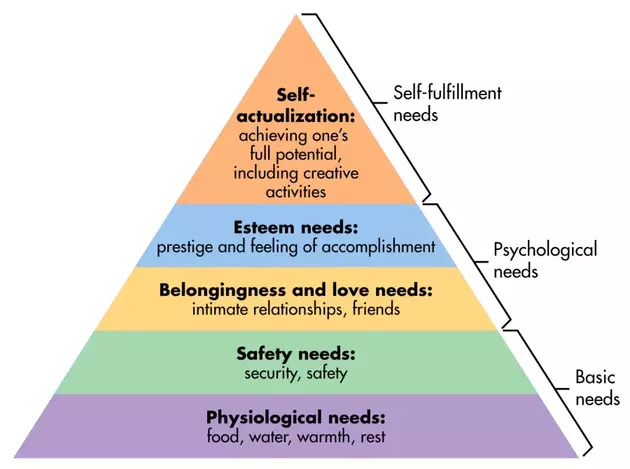A pleasant surprise. Came to know about this only today. Super delighted. Congratulations Fathima Latheef.

A pleasant surprise. Came to know about this only today. Super delighted. Congratulations Fathima Latheef.

Choose your certifications wisely. Certifications with redundant syllabus overlaps is a sure disadvantage.

Choose your certifications Wisely….
I did my PMP, what next?.Should I do any of the agile certifications? – This is one question we had to answer multiple times in the past. Yesterday also I had to answer this question again. From the Version#7 of the Project Management Body Of Knowledge (PMBOK), the base reference document for PMP certification, equal importance is given to both predictive project management (traditional project management) and agile project management. In other words,
Given that as the basis, logically there is no reason for someone pursuing any one of the agile certifications like Certified Scrum Master (CSM) or Professional Scrum Master (PSM) after their latest PMP certification based on PMBOK7. As PMBOK7 covers both agile and predictive project management in detail. But then in real life, I come across many PMPs who still do not understand critical path and earned value management even after their PMP certification. So are many of the certified agilists who does not understand empiricism and self organizing teams. When we examine just the exam content, the latest PMP course content is sufficient to manage projects in predictive, agile or hybrid way.
Then what makes the difference. Two factors.
Trainers with sufficient knowledge, experience can make a lot of difference. Multiple certifications with overlapping syllabus contents is a disadvantage. It can send wrong signals to others. Especially to those who are hunting for competent project management professionals who can put the project management best practices to work for the project’s advantage. Certifications are just the low lying fruits of the training programs. It is the application of the knowledge in real projects which makes the real difference between the credential and competency.
Congratulations to Mr.Suraj Sambasivam PMP for achieving the PMP credential. Suraj prepared for his PMP credential with the PMdistilled Project Management Professional training conducted by PMRI. It gives us immense confidence when he says he did not use any other reference material except the PMdistilled Guide, Online on demand modules, quizzes, exam practice and the one 2 one meetings with the Instructor. Now we have added mandatory weekend instructor led classes as well, with the hope of speeding up the preparation. When people attend in groups, that will definitely create healthy peer pressure to complete the exam on time. Suraj has given us some inputs to improve the course effectiveness further. We will do that as fast as possible. Once again thank you Suraj for trusting us to be your Project Management Professional Certification coach and mentor.

Click here for more about the PMdistilled Project Management Professional training
Post pandemic, the team building challenges are different due to the fact that we all learned to work differently. Most of the organizations have flexible working policies which is a blend of work from home and work from office. Organizations have started leveraging contract workers or gig workers to accomplish their goals faster and more cost effectively. All these poses the need for innovation in the team building concepts. Tuckman ladder helps us to understand the team formation stages in a structured manner and helps to develop appropriate strategies for team development.
Tuckman ladder comprises of;
Forming stage represents the stage in which the team members gets into the team for the first time. In projects, team formation and team building starts from the initiation phase and continues till the completion of execution phase. Since new team members are coming from different cultural and project backgrounds, it is important to establish the ground rules. The project vision, project charter and the team charter are of great help during this stage. These artifacts helps to lay the foundation for effective team building and team work. During the forming state of the team, the manager or leader’s primary objective must be to make the team comfortable. It is a great opportunity to leverage on servant leadership. You as a manager or leader helps the team to settle down quickly. During the forming stage, the manager or leader must wear the hat of a facilitator and counselor.
Since the team members are coming from different cultural backgrounds, immediately after the forming stage, one can expect a storming stage. During the storming stage, the team members try to establish themselves resulting in power struggles. This is very normal. During the storming stage, the manager or the leader must monitor and control dysfunctional behaviors and must wear the hat of a moderator. One should play the role of a moderator here. Establishing ground rules for effective teaming helps to manage the storming stage effectively.
Once the team passes through the forming and storming stages successfully, then they get into the ‘Norming Stage. During the norming stage, the team members understands their roles, responsibilities and the acceptable norms within the team (ground rules) and the goals to be accomplished very clearly. During the norming stage the manager or leader must play the role of a facilitator. The self organizing team concepts will help a lot for high performance team building during this stage.
At the end of successful forming, storming and norming stages, the team arrives at the performing stage. They are ready to start the real work in a productive manner. Very often, this is the most difficult stage for a leader or manager. You picked up the team members, and transformed them into a high performance team with appropriate team building exercises. All of a sudden, they started performing well, even without your guidance. You become a kind of redundant there. This is the time one must put in extra effort in not to interfere with the team unnecessarily and interrupt their work.
As we all know every game has a final match and after the hour of glory, the team will get adjourned. This is very true for projects as well, because projects are temporary in nature. As a manager or leader this stage is very crucial and it is very important to protect the good will generated while working together. This aspect becomes more important during these post covid work culture or the post pandemic work culture as more and more project teams are relying on contract workers or the gig workers more and more. If you are able to maintain the good will even after the project closure, it will become easier to avail great talents quickly in the future projects as well.
If teams work together for longer times as in manufacturing, all these stages will automatically happen over a period of time. In projects with tighter deadlines one do not have that kind a luxury. When majority of the teams are in the performing stage, if we add new team members then it can disrupt the teaming again. This is the reason why projects get delayed further when more members are added to a late project.
The manager or the leader must be able to drive the team through these stages very quickly in order to be productive fast. This is where the charisma and the creativity of the leaders and managers makes a big difference. We all play the game well to win, if we are playing against a common enemy. If the leader can identify and project the common enemy in the form of an opportunity or risk, half the job is done.
Have you encountered situations when fresh team members reactions about anything strategic was very discouraging?. I had to…not just from the freshers but from even middle level managers. They were unable to resonate with strategy and strategic thinking. I even thought that there is something wrong with my ideas. Then I came across the Maslow’s hierarchy of needs which helped me to relate better with the stakeholders of my project, which includeed the project team as well. Apart from Ken Blanchard’s situational leadership model, Maslow’s hierarchy of needs also help to fine tune the leadership style.
Let us delve deep into Maslow’s hierarchy of needs.

As shown in the diagram, the Maslow’s hierarchy comprises of;
Freshers in a team will be operating within the basic needs. What is really appealing to them would be more money, hygiene factors, job security and safety etc. Mostly, those in the middle management positions will be at the ‘Psychological needs’ level. At this level, monetary benefits may not matter that much. Prestige, accomplishment and deep bonding with others are key. The senior managers operates at the self actualization level.
Based on these motivators, leaders can adopt styles to get the best out of the stakeholders.
The project management job opportunities as well as the scope of the project manager’s job description are on the rise. Project manager’s job description goes beyond the triple constraints of time, cost and scope. The new project manager’s job description covers the achievement of the business case of the project as well. This makes the new project manager’s role more strategic. In this changed scenario, Have you ever wondered why some really climb up the professional ladder where as many do not, despite having the same credentials and opportunities? When we studied the careers of very successful project professionals, we could identify the following 7 habits common across the achievers.
By 2027, employers will need 87.7 million individuals working in project management oriented roles. The talent gap could result in a potential loss of some US$207.9 billion in GDP through 2027 for the 11 countries analyzed (China, India, USA, Japan, Brazil, Germany, UK, Canada, Australia and the Middle East region). PMI (2017). Project Management Job Growth and Talent Gap 2017–2027. Even though the pandemic might have negatively impacted these projections, this is good time to get ready to leverage the opportunities ahead.
If you want to understand how to systematically plan your project management career goals proactively, and to achieve them at the appropriate time, then read ahead;

The objective of the Project Manager’s Capability Maturity Model is to provide a professional ecosystem comprising of aspiring professionals, mentors, trainers, organizations and recruiters collaborating around a structured road map for meticulous planning and progression of project management as a profession.
The diagram below depicts the five levels of project management professional maturity.

At Level#1
At Level#2
At Level#3
At Level#4
At Level#5
How quickly one traverse through these levels depends on their ambition, commitment, mentoring and the ability to pivot according to the market trends. Instead of growing vertically through the five maturity levels, one has the opportunity to grow horizontally as ‘T’ skilled professionals who have in-depth domain expertise in a particular trade supported by good project management capability as well.
To start with, every month we offer free education to two professionals, who are the most deserving based on their professional track record and the present professional status.

If you really feel that a PMP certification will improve your career prospects , and if you are committed to put in the required effort to complete the PMP preparation course, then apply. It will take approximately 40 hours to complete the course. Upon successful completion of the course you will awarded 40 hours course completion certificate by PMRI.
You can apply by contacting us with a link to your linkedin profile.
We thank our sponsors for supporting us.
Best Wishes
team @ PMRI
Note : This Scholarship covers the 35 contact hours training. The PMP exam fees is not covered as of now. Hopefully we will be able to cover that as well in the future, as we get more sponsors for scholarships.
For the course details click here